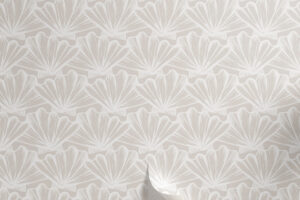Steam cleaners are efficient deep cleaning machines that use heat and water to make your dirty surfaces spotless. You can use them in the bathroom, on upholstery, grout lines, and carpets to remove dirt, grease, and stains. But the puzzling question that seems unanswered is where the dirt goes after steam cleaning. Does it disappear into the thin air, stay on the surface, or get absorbed by fibers of your mattress and upholstery? Discover that today and right here.
Quick Navigation
Where Does The Dirt Go When You Steam Clean?
Steam cleaners use high heat to weaken adhesive forces between the dirt and your dirty surfaces. The dirt doesn’t really go anywhere but remains on the surface loosely.

How Does A Steam Cleaner Work?
Steam cleaners work by heating water to high temperatures then using the resultant steam to dislodge dirt, grease, and grime from surfaces. More amounts of heat will usually mean more cleaning power as it contains more energy to weaken the bonds between dirt and your surfaces.
A little agitation adds to the efficiency, too. The weakened dirt doesn’t usually go anywhere. That’s why further action is usually needed after steam cleaning.
Meanwhile, steam cleaners not only remove dirt and stains but also kill bacteria, dust mites, molds, and other microorganisms. This, again, depends on the temperature as different microorganisms die at different temperatures.
All in all, no chemicals are needed to work with steam cleaners. That makes them safe to use around kids, pets, and family members.
How Does A Steam Cleaner “Remove” Dirt?
The working principle of steam cleaners remains the same — using heat to break the bonds between dirt and your soiled surfaces but leaving behind a dirty solution because they have no mechanism to remove it.
That means you need to clean the surface using any of the methods described in the following section.
Clearing The Surface
1. Using a Microfiber Pad Attachment
A steam mop with a microfiber pad attachment can remove loosened dirt on its own. The attachment absorbs residual solution as you continue loosening more dirt. It can get saturated with dirt when the area you’re cleaning is heavily soiled, or over time as you continue using it.
Therefore, replacements need to be made. You can replace it with a piece of towel or rag — whichever works best for you.
2. Wiping It Off
If your steam cleaner doesn’t feature a microfiber mop attachment or doesn’t have a provision for adding it to your machine, you can manually wipe off the dirt after steam cleaning. After the steam cleaner melts all dirt, use a piece of cloth or towel to wipe all of it from the surface.
Your choice of the right material will depend on how much dirt is available to remove from the surface, as well as the type of surface you’re dealing with.
3. Vacuuming
You may also consider using a vacuum to remove dirt, grease, and debris for some types of surfaces. For example, after cleaning a carpet, it might be difficult to simply wipe off the debris with a piece of cloth, mop, or towel. You’ll go for a vacuum instead.
The vacuum will suck up all debris and water, leaving your carpet clean and odorless.
Other Frequently Asked Questions & Their Answers
People have a lot of other questions about steam cleaners and how they work. We sampled some of the most commonly asked questions, curated concise answers for them, and shred them with you in this section. Here you go.
Can Steam Cleaning Remove Stains?
The straightforward answer is yes. Steam cleaners effectively lift stains, grease, and grime from lightly and heavily soiled surfaces. They also kill bedbugs, fleas, bacteria, molds, and mildew to mention a handful. But you have to hit higher temperatures as stains get tougher. Please also note that some stains are irremovable with steam alone, for example, waxy stains. While doing so, ensure that such temperatures won’t destroy the underlying surface/material.
Do Steam Cleaners Make Your Surfaces Wet?
It depends on the type of steam cleaner that you’re using. As far as water vapor is concerned, there are dry vapor steam cleaners and simply steam mops. The main difference between them is the steam-to-water ratio that comes out of their individual nozzles, which is 95% and 5% respectively in dry steam mops. Therefore, if you have a dry steam mop, you expect less water on cleaned surfaces and vice versa.
Can You Use A Steam Cleaner To Disinfect A Surface?
While they may not be the best option for disinfecting various surfaces, steam cleaners are very good at disinfection. They work at lethal temperatures that can go up to 345°F on the highest end. Therefore, these machines can kill over 99% of bacteria and pathogens in your home. Most pathogens are known to die at 212°F but most steam cleaners often go far above that.
Always Remember The Following While Using Your Steam Cleaner:
- Always check if the surface you intend to clean is recommended for steam cleaning by the manufacturer to avoid heat damage on your valuables.
- Wear protective clothing and glasses while using steam cleaners.
- Some cleaning tasks are too simple to involve a steam cleaner.
- Use the machine with only distilled water as salty water causes blockage and voids its warranty.
- Stay away from steaming porous surfaces.
- Always ensure that your steam cleaner is switched off while adding water to the reservoir.
Wrap-up
So that’s all about where the dirt goes after steam cleaning. It’s now clear that the dirt doesn’t usually disappear but remains on the cleaned surface after being dislodged. It’s waiting for your action using a mop, vacuum, or other tools.
Steam cleaners only work to loosen the dirt for easy removal, except for the case of cleaners with mop attachments. The machine also kills bacteria, pathogens, and mold.


